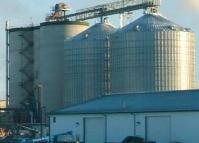Risk management crucial as feed prices soar

With a recession underway driven by record oil and crop prices, feed markets are experiencing a historical moment. Feed Tech spoke with sources who say inept public policy and laissez-faire risk management in the United States have contributed to some dramatic losses. By Nicholas Zeman
wheat, soybeans and corn, have toppled previous price records several times over
the course of the last 18 months. The biofuels industry has been blamed for this
continuing debacle and accused of diverting critical grain supplies used to feed
the
world.
Meat processing companies like Pilgrim’s Pride and Tyson have been complaining
about feed prices and calling for emergency actions such as the immediate
opening of Conservation Reserve Program (CRP) land. Pilgrim’s Pride even closed
a processing complex and six distribution centers attributing the cause to a
crisis facing the chicken industry related
to “soaring feed ingredient cost
resulting from corn based ethanol production.” Tyson followed suit releasing a
press statement in April which read, “president and CEO supports position to
relax ethanol mandate.”
the biofuels industry’s production practices themselves, that have caused
problems. “We are opposed to policy that makes winners and losers in how the
game of how grain is being used,” says Joe Schuele, spokesman for the National
Cattleman’s Association (NCA). “We think competitors should be able to bid for
grains in a free market, and we are at a large disadvantage because subsidies
and mandates give the edge to biofuels.”
strange behaviour in the private sector contravening the essential intent of
legislation meant to support breakthrough energy technologies and start-up
companies. “It’s undeniably true that subsidies can distort markets, but
biofuels policy is only about one-third of the problem with the
dramatic
escalation in prices,” says David Swenson, professor of economics at
Iowa State University (ISU). “Another third is increased worldwide demand and
the last fraction consists of intangibles…like weather and the struggle to keep
land in production.”
US policy makers indeed seem to
suggest that there is always going to be more acres for increased agricultural
production, a seemingly unbounded supply of resources, but that is fallacy.
Urban sprawl, for instance, and other forces besides biofuels production, also
eat up acres and contribute to higher prices. “The supply of agricultural land
is not growing… its disappearing,” Schuele tells Feed Tech. “There is
record-high world demand for feed at the same time there has been a loss of
agricultural land to development,” he adds. Increased worldwide demand and bad
weather have plenty to do with the current feedstuff shortages, but biofuels
have been a convenient scapegoat for record oil and crop prices worldwide. “The
popular press, the NBC’s and CNN’s of the world, seem to have a very simple
approach to this situation – reporting whatever the titans of industry tell
them,” says Jerry Gidel of North American Risk Management Services,
headquartered in Chicago. “But there are some other things going on here besides
biofuels. Of course I believe one of the keys to success is to be actively
involved in risk management. General Mills just had their best quarter ever, and
it was because they were actively involved in the market.”
Other companies are trying to shift responsibility when the
truth is, Gidel says, they didn’t manage their risks properly. “The twist in my
opinion is so called ‘skyrocketing’ increases we hear about all the time,” Gidel
says.
inflation of food prices since the 1970’s, and that’s risen over the past year
to about 5.7-5.8% – yes it’s a jump, but I wouldn’t call it ‘skyrocketing.’”
Managers can’t necessarily assume anymore that input expenses will remain under
cost calculations, or that things will be the way they’ve been for the past 20
years, Gidel says.
week,” he says. Therefore, monitoring the weather, streaming trade prices and
crop reports from the department of agriculture are all things that purchasers
need to do when deciding what percentages of raw materials to buy through
long-term contracts and what percentages to by on spot markets.
Purchasers should be
actively participating in futures and options and working hard to stay ahead of
the game, Gidel says. “Instead there’s this laissez-faire approach to buying
that can get a lot
of people into a lot of trouble. “The weather could turn
back and we could have $4.50 corn again by next fall. The same thing happened
with wheat. People were stumbling along saying ‘Flour’s topped out, better not
order any more right now!’ But it didn’t peak until it hit $14.”
which means producers should be looking to add value through increased sales,
market expansion and less waste. “We need to get our export markets hitting on
all cylinders,” Schuele says. Korea, for instance has just started to accept US
beef, and consumers there have paid steep rates—up to $30-per-pound ($13.60/kg)
– locally. “We feel like we are the most efficient producers in the world so the
Korean consumer is much better buying from us even if our price of production is
high,” he says. “We are still able to use grains very efficiently and it’s still
getting better all the time.” Different items are also popular in Asia so there
opportunities to sell those cuts usually are looked over in the west. Just by
utilizing short ribs, which are popular in Korea, producers can add as much as
$25-per-head to their bottom lines”, Schuele says.
The argument from the ethanol
industry has been that one of its own products can boost feed efficiencies
related to fattening and finishing beef cattle, and buffer the spikes in market
prices for raw materials in other livestock sectors as well.
a corn substitute,” professor Swenson says. “The price has risen right along
with corn so that’s been the lone bright spot for ethanol plants (who are also
struggling), but it’s offered little relief for livestock producers.” These are
trying times, and the NCA says biofuels coproducts have offered little relief.
“Distillers grains were expected to be cheaper than they have been,” Gidel says,
adding that utilizing the byproduct has not been a major factor in his risk
management advice to clients.
semi-moist. But it’s harder to use in the eastern Corn Belt, plants are trying
to get as much as they can for this product.” Distillers grains are a better
feed for dairy cows and cattle but not utilized often in the pork and poultry
sectors. Cattle can feed about 30 to 40%, while pigs only about 10% and chickens
even less. “Some cattle feeders are able to use this product effectively and we
do support research that promotes maximizing the applications,” Schuele says.
“But it’s really a small consolation.”
Feedstuff production
is a dominant driver of the world’s wealth, so it is perhaps ironic that
significant gains in the grain sector do not benefit the rest of the economy in
a major way, and in fact has negative affects as seen by the crunch felt by
livestock producers and meat processing companies.
only comes if there is an expansion in the rest of the economy, which right now
is not happening. “Good returns to farmers are usually offset because of higher
food prices and increased household spending on necessities, especially if wages
are not increasing,” Swenson says.
diversify their marketing base. Now they are taking the blame for a food crisis
situation, and ethanol plants are also struggling because of the cost of their
number one input – corn. There’s a similar scenario when it comes to biodiesel
and soybeans. The price of soy oil has caused several
biodiesel plants to
operate below capacity or halt operations. This seems like an insatiable process
only companies like ADM, Cargill, Bunge, and ConAgra – which are biofuels
producers as well as feed processors – are happy with.
along with a worldwide slowdown and little relief in the foreseeable future, but
also record profits for ag-giants. While some companies are boasting record
profits during the so-called “food crisis” caused by rising crop and fuel
prices, the US dollar have lost 26% of its value compared to competing world
currency over the last four years.
nicholas.zeman@und.nodak.edu.
capacity or halt operations. This seems like an insatiable process only
companies like ADM, Cargill, Bunge, and ConAgra – which are biofuels producers
as well as feed processors – are happy with.











